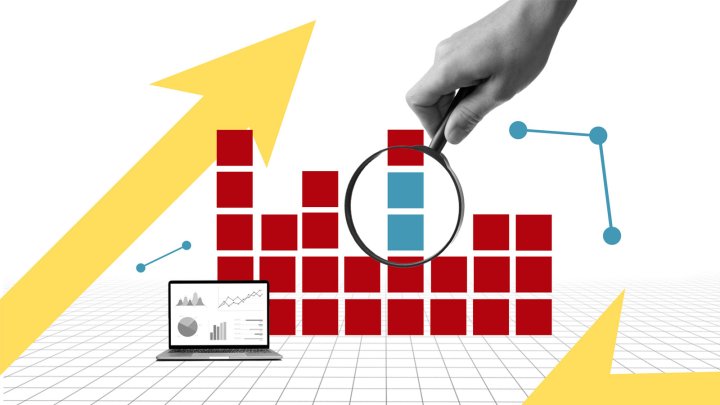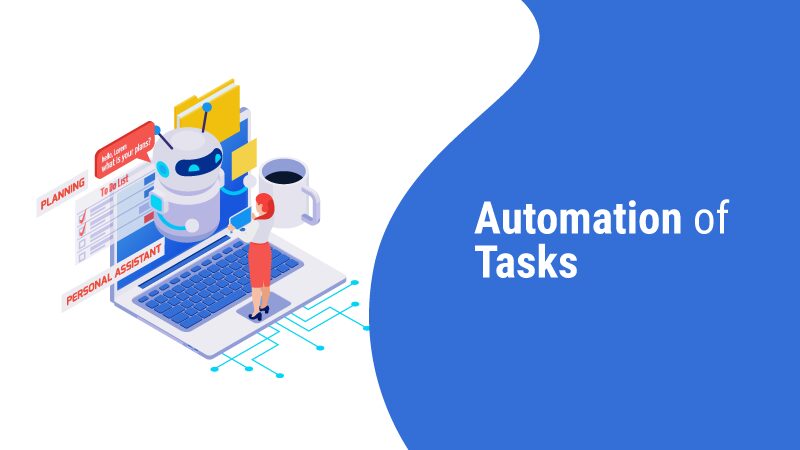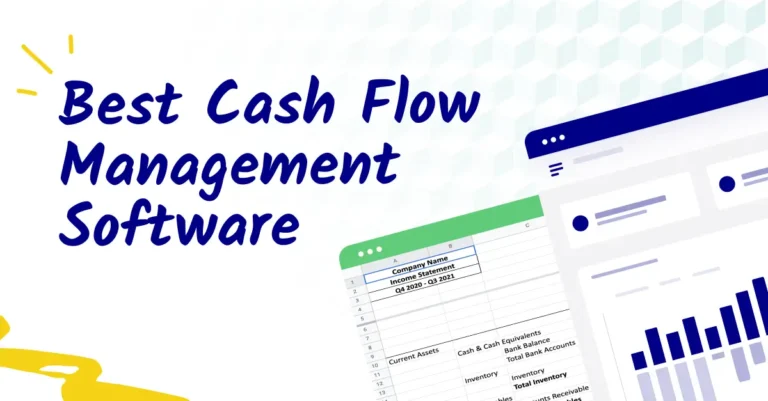Once the exclusive domain of financial wizards, cash flow management has been completely transformed in the digital age. A deep understanding of funds flowing in and out was essential for businesses to maintain solvency, predict future financial health, and strategize accordingly. However, this was often accomplished through manual methods, resulting in potential inaccuracies.
Enter the era of cash flow forecasting software. These sophisticated tools, combining data analytics with intuitive interfaces, have revolutionized the way businesses approach their financial forecasting. Not only do they automate the once labor-intensive processes, but they also provide insights that were previously almost impossible to ascertain.
These software solutions have become the keystone for businesses of all sizes, offering a lens into the future and helping navigate the often turbulent waters of financial management. Their rise is reshaping the very foundation of business finance, and this transformation is worth exploring in depth.
The Power of Real-Time Data

Historically, financial forecasting was based on historical data, requiring tedious manual entry and subsequent analysis. Today’s cash flow forecasting software has flipped the script, emphasizing the power of real-time data. With transactions being recorded instantly, businesses can see their financial position at any given moment.
This immediate access offers a multitude of advantages. For starters, decision-makers can respond more rapidly to emerging situations, be it an unforeseen expense or a sudden cash influx. Real-time data allows for agile business practices, ensuring that businesses can pivot and adapt as situations unfold.
Furthermore, by eliminating the lag between data entry and analysis, these software solutions reduce the risk of human error, ensuring that the data driving decisions are both current and accurate. In an era where timely decisions can make or break a business, this immediacy is invaluable.
Advanced Analytics and Predictive Insights

Beyond merely presenting data, the true power of modern cash flow forecasting software lies in its analytical capabilities. Leveraging advanced algorithms, these tools can identify patterns, offering predictive insights into future cash flow scenarios. This foresight is a game-changer for businesses, allowing for proactive, rather than reactive, financial management.
Centime, as an example, integrates such advanced analytics within its platform, allowing businesses to monitor cash flow efficiently. It’s not just about presenting numbers; it’s about translating those numbers into actionable insights. With tools like these, businesses can anticipate challenges and opportunities alike, navigating their financial future with unparalleled precision.
In essence, we’re moving beyond the rudimentary “what happened” to the far more valuable “what’s likely to happen next”. By leveraging the might of machine learning and data science, cash flow forecasting software is paving the way for a new era of predictive financial management.
Seamless Integration with Existing Systems

One of the hallmarks of modern software solutions is their ability to integrate seamlessly with existing systems. Cash flow forecasting tools are no exception. They can easily synchronize with various accounting, banking, and sales platforms, ensuring a cohesive financial ecosystem.
This integration ensures that all data channels flow into the forecasting tool, providing a holistic view of a business’s financial health. Whether it’s sales data from a CRM, transactional data from a bank, or expenses from an accounting software, everything is consolidated in real-time.
For businesses, this means no more juggling between multiple platforms or manual data reconciliation. Everything they need to understand, forecast, and manage their cash flow is available in one unified interface, streamlining operations and enhancing accuracy.
Democratizing Financial Expertise
Historically, in-depth financial forecasting was a luxury, often reserved for large corporations with dedicated financial departments. Small and medium enterprises (SMEs) typically lacked the resources for such comprehensive analysis. Cash flow forecasting software has effectively democratized access to this expertise.
Now, even the smallest of startups can harness the same forecasting tools as multinational corporations. This leveling of the playing field is monumental, ensuring that businesses of all sizes can plan, strategize, and compete effectively.
Furthermore, the user-friendly interfaces of these tools mean that deep financial expertise is no longer a prerequisite. Business owners, even those without a financial background, can understand and leverage the insights offered by these platforms, ensuring informed decision-making across the board.
Scenario Planning for Uncertain Times
The business landscape is rife with uncertainties. From economic downturns to global pandemics, companies need to be prepared for a multitude of scenarios. Modern cash flow forecasting tools have risen to this challenge, offering scenario planning capabilities that were once the domain of complex financial simulations.
Businesses can now model various scenarios – be it a decline in sales, an increase in operational costs, or unforeseen market changes. The software then projects the potential impact on cash flow, allowing businesses to prepare and strategize accordingly.
This ability to peer into multiple potential futures is especially valuable in our unpredictable world. Companies can not only brace themselves for challenges but also recognize and seize emerging opportunities, ensuring resilience and growth in even the most tumultuous times.
Automating Repetitive Tasks and Enhancing Efficiency

One of the less celebrated, yet profoundly impactful, aspects of cash flow forecasting software is its ability to automate repetitive tasks. Whether it’s data entry, invoice tracking, or payment reminders, these tools can handle a multitude of mundane tasks, freeing up human resources.
This automation results in significant time and cost savings. Employees, liberated from routine tasks, can focus on more strategic, value-driven roles, driving innovation and growth. For businesses, this means a leaner, more efficient operational model, leading to enhanced profitability.
Furthermore, by minimizing manual interventions, these tools also reduce the scope for human errors. The result is a more accurate, reliable, and efficient financial management system, underpinning the overall growth and sustainability of the business.
Enhancing Stakeholder Communication
Cash flow is not just an internal metric; it’s a key indicator for various stakeholders, from investors to creditors. Communicating this effectively is crucial. Modern forecasting tools come equipped with intuitive dashboard displays, real-time reports, and visual analytics, making stakeholder communication more transparent and effective.
Whether it’s showcasing financial health to potential investors, demonstrating fiscal responsibility to creditors, or keeping internal teams aligned, these visual tools make data digestible and compelling. Stakeholders can quickly grasp the nuances of the company’s financial position, leading to informed and timely decisions.
In a world where data drives decisions, the ability to present this data compellingly is a distinct advantage. Cash flow forecasting software, with its visual prowess, is enabling businesses to communicate more effectively than ever before.
Continuous Learning and Adaptation

The financial landscape is dynamic, and the best software tools are those that evolve with it. Modern cash flow forecasting platforms are designed to continuously learn from the data they process, refining their algorithms and enhancing their predictive accuracy over time.
This continuous learning ensures that businesses always have access to the most current and accurate insights. The software adapts to changing market conditions, economic trends, and internal business shifts, ensuring that forecasts remain relevant and actionable.
In essence, these platforms are not static tools but dynamic allies, growing and evolving alongside the businesses they serve. This adaptability is crucial in ensuring that businesses remain ahead of the curve, prepared for both present challenges and future opportunities.
The Future of Financial Forecasting

We stand at a transformative juncture in the world of financial management. Cash flow forecasting software, with its myriad features and capabilities, is leading this charge, reshaping the way businesses approach their finances.
The benefits are multifold, from real-time insights and advanced analytics to seamless integrations and automation. But beyond these tangible advantages lies a more profound shift. These tools are democratizing financial expertise, ensuring that businesses, irrespective of size or resources, have a clear, predictive lens into their financial future.
In the ever-evolving landscape of business finance, one thing is clear: cash flow forecasting software is not just a tool for today but an essential ally for the future.
Related Posts:
- 20 Best Gaming Headset Under 50$ 2024 - for PC, PS4,…
- Unveiling Price Insights: Understanding Price Impact…
- The Ultimate Guide to Vendor Management ─ Why Your…
- 5 Ways Data Analytics Can Improve Your Growing Business
- The Future of Digital Marketing ─ The Role of a Web…
- 15 Best Dog Food For Allergies 2024 - Adult, Puppy…







